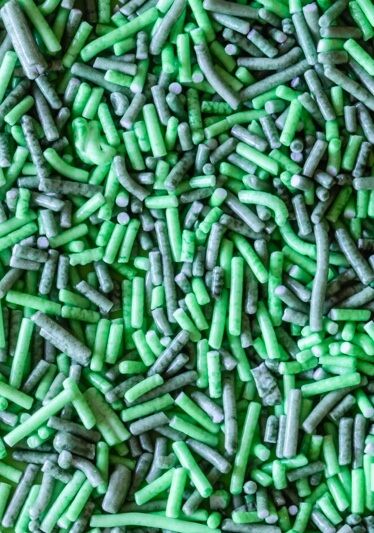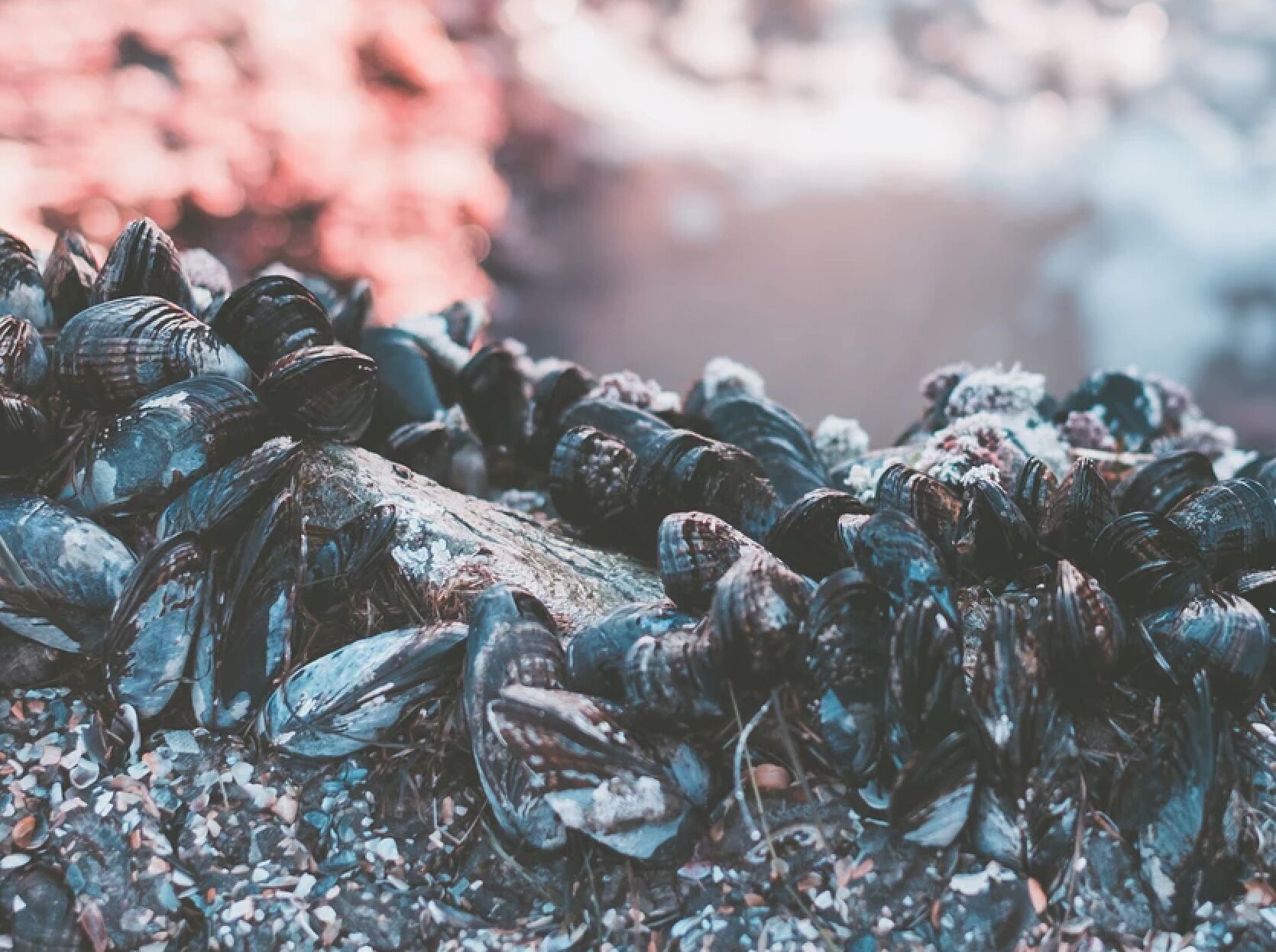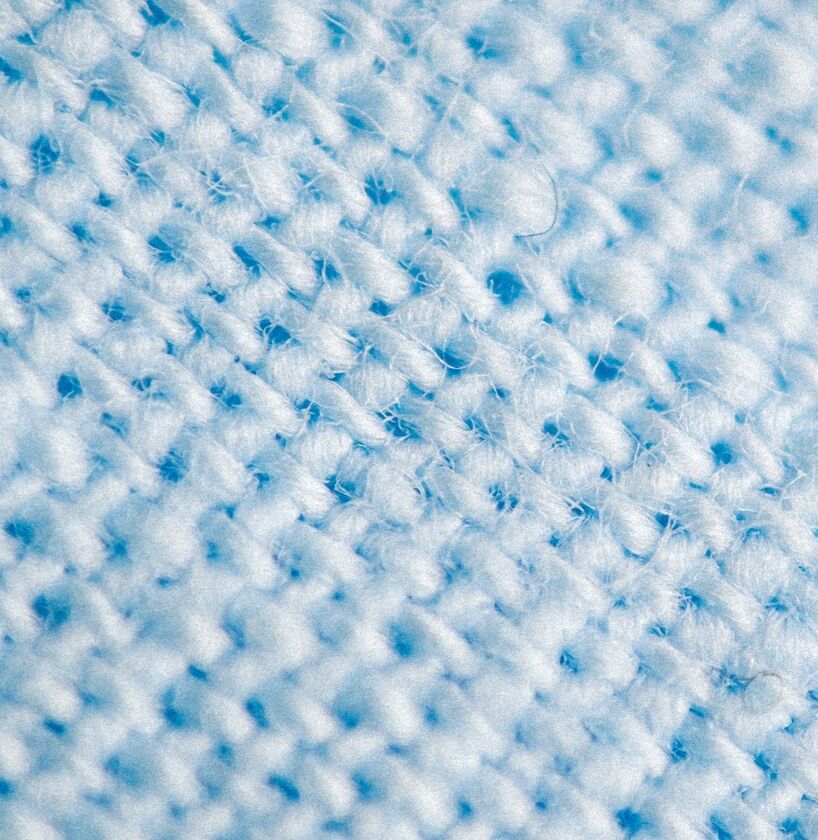We eat and breathe plastic. How does it affect our health?


Plastic pollution has invaded life from the arctic to the equator. Vast amounts litter oceans, cities and beaches. Micro-sized plastic particles and minute fibres are accumulating in soils and sediments. Plastic is now in the air we breathe, the water we drink, the clothes we wear and the food we eat.
Plastic ubiquitous, insidious and impossible to avoid. Microscopic, potentially toxic particles and fibres, measuring the width of a human hair or less, have been found throughout the human food chain, in seafood, insects, shellfish, bottled, tap and well water and salt. Even enjoying a pint of beer, a soft drink, or a sweet treat containing honey and sugar might no longer be so carefree – or plastic-free - as you think.
The world’s oceans teem with far more debris than previously thought. Nearly all the pollution that ends up as minute pieces in water starts on land, leaching into rivers and onto beaches via degrading bags, bottles, and other plastic items, washing machines, sewers, overflows, waste dumps, incinerators, and industrial processes. These pathways require further mapping.
The world’s oceans teem with far more debris than previously thought, but nearly all the pollution which ends up as minute pieces in water starts on land
There is now mounting concern that these under-studied particles threaten health by presenting a potential source of toxic chemicals to the human body. Quite how much people ingest, drink and breathe, and what effect this is having on short and long-term health, and what are safe concentrations is still poorly understood.
Researchers this year found particles from nine out of 10 different types of plastic in the stool of people from Finland, Italy, Japan, the Netherlands, Poland, Russia and the UK. Based on the small study, the Austrian researchers estimated that over half the world’s population might have micropastics in their stools.
There is now mounting concern that these under-studied particles threaten health by presenting a potential source of toxic chemicals to the human body.

While most attention has been paid to plastic in the ocean, the reality is that everyone, from pregnant mothers and the unborn child, to old age pensioners and workers in rich and poor countries, is being contaminated to some extent – but the question remains, does this increase our chances of becoming ill?
Information about how plastics may be affecting human health is still limited but scientists are now calling for a complete rethink about how plastics are made and disposed of. Bigger, better, and more definitive studies are needed to investigate the toxic characteristics of micro-plastics, their behaviour in the human body and what constitutes a safe threshold for exposure when inhaled or eaten.
Plastic never goes away. The vast majority is nearly indestructible and lasts for hundreds, if not thousands of years. Under the action of waves, wind, oxygen, heat, ultraviolet light and friction, it simply fragments and breaks down into smaller and smaller particles.
As the global economy expands, its use escalates and human exposure to micro plastics grows. Since the 1950s when plastics were first mass-produced, an estimated 8.3 billion tonnes have been manufactured of which nearly 80% is believed to have been landfilled or to be still in the natural environment. Production increases about 3% a year and is forecast to double again in the next 30 years, by which time another 30 billion more tonnes may be manufactured annually
Plastic debris may be a modern scourge yet its versatility and benefits are unquestionable.
Our appetite for plastic is insatiable. One million plastic water bottles are bought around the world every minute and that number is expected to jump another 20% by 2021. Plastic may last for generations, but nearly half of all that is made becomes waste within four years, 40% has only a single use and 90% is not recycled. Up to 12 million tons of plastic litter could be entering the ocean every year and the amount is set to triple by 2025.
Most plastic is produced in rich countries, but the majority of pollution comes from the many countries that have poor or non-existent collection and recycling systems.
Plastic debris may be a modern scourge yet its versatility and benefits are unquestionable. Over the last 50 years, it has fuelled the global economy, become the packaging material of choice and is used in a myriad of manufacturing processes. It is found in adhesives, paints and cosmetics, cars and electronics, cables, computers, dry-cleaning fluids, rocket fuel, roofs, tanks, and insulation, toys, furniture and many construction materials. The durability and adaptability of this petrochemical product has made it the true child of the oil age.
Most plastic is produced in rich countries, but the majority of pollution comes from the many countries that have poor or non-existent collection and recycling systems. The result is not just ocean pollution but a tsunami of plastic litter clogging drains, causing floods and becoming ideal breeding grounds for mosquitoes. Eight Asian and two African rivers, including the Yangtze, Indus, Nile and Ganges, are thought to transport nearly 80% of the world’s microplastics to the World’s oceans.
Plastics are made from a broad range of chemicals known as polymers which are 99% derived from the oil and gas industry. Synthetic, or man-made, chemicals are then added in the manufacturing process to this feedstock to give plastic qualities like strength, flexibility, durability, colour and transparency.
The combination of these polymers and added catalysts, stabilisers, pigments, flame retardants and solvents, results in a cocktail of contaminants which not only alter the nature of plastic but can leach as toxins into the air, water, food and human body tissue.
Marine life has been widely seen to be devastated by large bits of floating plastic. Humans, however, are likely being increasingly exposed to micro and nano-sized plastic particles and beads. These are predicted to be consumed by ingesting them in food and drink; by absorbing them through the skin; and from potentially inhaling them. Whatever way, the result is the growing presence in the human body of toxic chemicals.
Humans, however, are likely being increasingly exposed to micro and nano-sized plastic particles and beads.

Scientists know that microplastic particles can absorb or carry organic contaminants, such as PCBs, pesticides, flame retardants and hormone-disrupting compounds. But the risks they pose is unclear and not uniform. Some particles may pass quickly through the human body without releasing their toxins, others can accumulate in it but be harmless, more still may remain lodged in the body in dangerous concentrations. The most dangerous could be the smallest nano-particles which can enter cells.
What is certain is that many of the chemicals that are routinely used to make plastic are dangerous. Bisphenol A (BPA), a group called phthalates, and some of the brominated flame retardants, all of which are used to make household products and food packaging, are proven endocrine disruptors which can damage human health if ingested or inhaled ,.
Some of these toxicants have been linked to cancers and damage to the immune system. Others have been shown to travel across a mother’s placenta and be particularly dangerous to young children. Many have been banned from use in baby bottles and children's toys. Others in regular use have been linked to the malformation of foetuses and adverse birth outcomes, as well as allergies and cardiovascular disease. Many of the additives to plastics have been studied, but the hazards of minute plastic particles to humans are only slowly emerging.
Microplastics have been reported in varying amounts in many species of seafood as well as in sea salt, honey, sugar, and processed food and drinks. They can enter the food chain via water, contact with food packaging, air pollution in shops, homes and food factories, and via sewage sludge which is spread on fields as a fertiliser.
Micro- and even smaller nano-plastics get into the human food chain via sea foods which for millions of people are essential to diets. Microplastics have been found in cod, mackerel, sea bass and more than a quarter of fish in markets in Indonesia and California.
But micro-plastics have been found in much larger quantities in many other marine organisms including zooplankton, crustaceans and shellfish. Concern is growing over the 22 million tonnes of bivalves which humans eat each year. These oysters, mussels, clams, shrimps and scallops use their gills to filter and capture tiny particles of food in the water such as phytoplankton, and so are in permanent contact with plastic-polluted water.

Belgian scientists recently calculated that shellfish lovers are eating up to 11,000 plastic fragments in their seafood each year. In China, where much of the world’s shellfish is farmed and eaten, and where much of the micro plastic pollution has been found, consumers are thought to ingest ten times as much.
Plastics can also contaminate the human food chain through constant exposure to the chemicals used in food packaging, building and household materials.
Many of the most widely used plastics in packaging contain a group of chemicals called Phthalates and BPA (bisphenol A). These key compounds of polycarbonate and polyester help soften plastics and make them transparent. BPA is used to make water bottles, coat the inside of food tins, line bottle tops, food trays and water pipes.
But researchers have shown how BPA and other chemicals have been detected widely in urine samples, leach into foods and are linked to asthma, attention-deficit hyperactivity disorder, breast cancer, obesity and type II diabetes.
The US national Toxicology programme (NTP) says it has “some concern” for BPA’s effects on the brain, behaviour, and prostate gland in foetuses, infants, and children.
Research is based largely on animal studies and no single study conclusively proves that BPA is harmful to humans , , but the danger of people chronically poisoning themselves is taken seriously by some governments and many scientists. The US national Toxicology programme (NTP) says it has “some concern” for BPA’s effects on the brain, behaviour, and prostate gland in foetuses, infants, and children. It is still used widely in Britain in food containers.
Phthalates are a large class of chemicals that are widely used in shampoos, lipsticks, drugs, flooring, plasticisers, food packaging, toys, and cosmetics. Few have been fully studied, some have been banned and their cumulative toxic effect on humans is unknown. However, in the past few years, researchers have linked phthalates to asthma, attention-deficit hyperactivity disorder, breast cancer, obesity and type II diabetes, low IQ, neurodevelopmental issues, behavioural issues, autism spectrum disorders, altered reproductive development and male fertility issues.
The fear is that micro plastic particles are carriers for other toxins to enter the body. Plastic microparticles are known to bind to compounds containing toxic metals like mercury, and organic pollutants including pesticides, and chemicals called dioxins known to cause cancer and reproductive and developmental problems. If the microparticles enter the body, these toxins could then accumulate in fatty tissues.
Earlier this year the River Tame in Manchester was found to have 517,000 plastic particles of plastic per cubic metre of sediment, nearly double the highest concentration ever measured anywhere else in the world. Yet the industrial river which flows into the Mersey and then the Irish sea is widely thought to be one of the most ecologically improved in Britain, full of fish and inspected regularly by the Environment Agency.
Microplastic pollution is turning up in “fresh” water everywhere around the world. Particles have been found in bottled and tap water, well water and 24 varieties of German beer. The more researchers look, the more they are finding.
Several recent studies have shown drinking water to be contaminated with microplastics. In one, 159 us tap water samples were taken from seven counties and 94% were found to be contaminated. Some contained up to 57 micro particles per litre. The authors concluded that people may consume 3-4,000 particles a year from tap water alone.
A second study of 259 brands of bottled water taken from nine countries conducted by the State University of New York, found only 17 to be free of plastic.
A second study of 259 brands of bottled water taken from nine countries conducted by the State University of New York, found only 17 to be free of plastic. The average number of particles was low, but the highest was nearly 10,000 plastic pieces per litre of water. In addition, nano-sized particles smaller than 100 microns were found in large quantities. These were not tested but were presumed to be plastic.
In all studies, the numbers of particles were relatively low compared with other forms of particle pollution such as is regularly found in urban air from diesel and petrol vehicles. But little is known about the cumulative, long-term impact of drinking microplastic contaminated water.
The danger of drinking plastic contaminated water has barely been assessed even though many people drink a bottle or more a day. The World Health Organisation has said it intends to review the scientific literature but is not expected to find much because so little research has been done.
Air pollution kills around 6 million people prematurely each year, but until recently scientists had little idea that the air breathed in cities might contain tiny plastic particles. That changed in 2016 when a French study showed how a rain of microplastics regularly falls on Paris, dumping between three and 10 tonnes a year on the city, and potentially impacting people’s health.
Micro plastic air pollution is now known to come from both outdoor and indoor sources. Vehicle tyres, discarded litter and packaging, the dust produced when synthetic textiles are made, washed and dried, supermarkets and factories, and even the sewage sludge that is spread on fields as fertiliser, are all potential sources.
The clothes we wear are potentially hazardous. Nearly 16% of all the world’s plastic production, or about 60m tonnes a year, goes to make synthetic textiles like Nylon, Polyester, and Spandex, which end up as the world’s shirts, trousers, sports kit, carpets and upholstery.
Nearly 16% of all the world’s plastic production, or about 60m tonnes a year, goes to make synthetic textiles like Nylon, Polyester, and Spandex

The micro fibres shed from synthetic fabrics are different to most plastic. Production, which is increasing worldwide about 6% a year, involves the weaving together of minute threads to which are added chemicals and dyes to give the cloth colour and qualities like waterproofing, softness and elasticity. Micro fibres are easily released into the air. Clothes can shed thousands of microfibres at a time when being washed.
Several studies suggest that we may be exposed widely to these fibrous micro plastics both in the home and out of doors. In one, nearly a third of all the fibres collected indoor contained petrochemicals. In the other, indoor pollution of the micro-fibres was found to be much more serious than outdoor.
The wastewater from washing machines has been found to release thousands of individual fibres from a single wash. Depending on wastewater infrastructure, treatment plants may catch less than half of the fibres, so the chances of these plastic microfibres reaching the ocean are high.
Plastics are made with petroleum, so are particularly attractive as a fuel for burning. Millions of tonnes a year are collected and incinerated in rich countries to save recycling and provide heat. But burning plastic is also known to release harmful dioxins into the air. The industry claims that state-of-the-art plants filter out such toxic air pollution but this is disputed.

Burning plastic in the open, which is practised widely in parts of Asia and Africa is particularly dangerous. In one Indian study, the burning of household waste was found to release dangerous dioxins, furans, mercury and polychlorinated biphenyls which have been linked to heart and respiratory diseases.
Scientists do not know exactly what might be a healthy level of airborne micro-plastics. But they mostly agree that if you can breathe them in, they could potentially deliver chemicals to the lower parts of our lungs and possibly into our circulation, in the same way as diesel particles have been shown to be present in the bloodstream.
The impacts of plastic particles through the food we eat and the air we breathe is an emerging concern. But the human health impacts are under-studied. More robust scientific evidence is needed to establish fully the risks and impacts of human exposure to micro plastics and the chemicals they contain.
Research is also needed to understand better how the plastic particles might build up in lungs and in digestion systems, and what are the acceptable doses and exposures to micro and nano-particles. More knowledge is needed about how plastic micro particle pollution compares to other sorts of pollution which may be inhaled or ingested.
Knowledge of the interaction of plastic particles with tissues and cells in humans is still poor but there is enough evidence about the risks to take action.
Plastic debris is one of the world’s foremost environmental concerns, alongside climate change and habitat degradation. All life on earth, from ecosystems to people, are increasingly being exposed to plastic waste without knowledge of its full effect.
What is most alarming is how quickly the pollution has built up. Plastic was first mass-produced in 1950 and by 2017 8.3 billion tonnes had been produced - this figure is projected to triple again by 2050. Micro particle pollution is escalating at an alarming rate - it is out of control and impossible to clean up. The risks plastic pose to our health today are alarming when we consider the imminent and dramatic increase in exposure.
National and international regulation has not kept pace either with the many different plastics which are flooding into the market, or with the vast quantities now being used.
Companies need to dramatically rethink the use, supply and recovery of plastics. Governments must regulate to radically reduce production and pollution, optimise recycling, and the development of safer alternatives. Scientists must be enabled to research more fully the health effects. Consumers must be made more aware of the hazards that our every-day plastics pose to the ocean, and to us.

John Vidal was the Guardian's environment editor. He joined the paper in 1995 after working for Agence France Presse, North Wales Newspapers, and the Cumberland News. He is the author of McLibel: Burger Culture on Trial (1998) and has contributed chapters to books on topics such as the Gulf war, new Europe, and development.